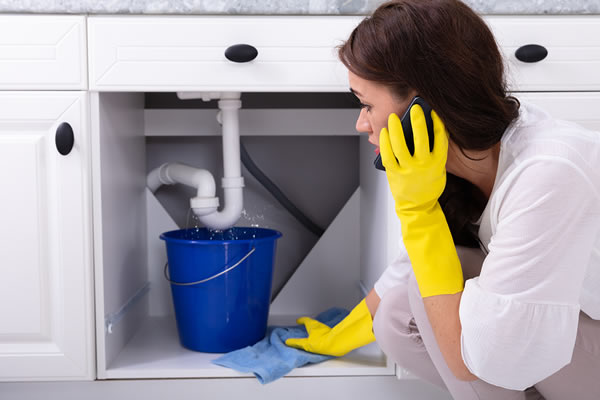What are your thoughts regarding Detecting hidden plumbing leaks?

Early discovery of leaking water lines can minimize a prospective calamity. Some small water leakages may not be noticeable.
1. Check Out the Water Meter
Checking it is a surefire means that aids you uncover leakages. If it moves, that indicates a fast-moving leak. This implies you might have a slow leak that might also be underground.
2. Inspect Water Intake
Evaluate your water costs as well as track your water usage. As the one paying it, you need to notice if there are any disparities. If you identify sudden changes, regardless of your consumption coinciding, it indicates that you have leakages in your plumbing system. Keep in mind, your water expense ought to drop under the same variety each month. An unexpected spike in your costs indicates a fast-moving leak.
A steady boost every month, even with the same behaviors, reveals you have a slow leakage that's additionally gradually intensifying. Call a plumber to extensively inspect your property, specifically if you really feel a cozy area on your flooring with piping underneath.
3. Do a Food Coloring Examination
When it comes to water intake, 30% comes from commodes. If the color in some way infiltrates your dish throughout that time without flushing, there's a leak in between the tank as well as dish.
4. Asses Outside Lines
Do not fail to remember to check your outside water lines as well. Examination spigots by attaching a yard pipe. Must water permeate out of the connection, you have a loose rubber gasket. Replace this and make certain all connections are limited. It will help get it professionally checked out as well as preserved annually if you have actually got a lawn sprinkler system. One tiny leak can squander tons of water and increase your water bill.
5. Examine the circumstance as well as inspect
House owners must make it a habit to inspect under the sink counters and even inside closets for any kind of bad odor or mold and mildew growth. These two warnings suggest a leak so timely attention is required. Doing routine inspections, also bi-annually, can save you from a major issue.
If you know your residence is currently old, keep a watchful eye on your heating units, hose pipes, pipelines and so on. Look for stainings and also weakening as a lot of pipes and home appliances have a life span. They will certainly also naturally wear away as a result of tear and use. Do not wait for it to intensify if you believe leaking water lines in your plumbing system. Call a specialist plumber as soon as possible so you do not wind up with a horrible mess in your house.
Early discovery of dripping water lines can mitigate a potential catastrophe. Some small water leakages might not be visible. Checking it is a proven way that assists you uncover leakages. One little leakage can lose tons of water and surge your water costs.
If you believe leaking water lines in your plumbing system, do not wait for it to intensify.
How to Know If Your Home Has a Hidden Leak
Water Meter Reveals Inexplicable Water Usage
If you’d like to test whether or not there’s a leak somewhere in your home, you can do this using your water meter. Here is how to conduct the test:
Don’t use any water in your home for at least 30 minutes; this also means not turning on faucets or water-using appliances.
Go outside, and check your water meter for activity.
If your water meter shows that there was activity, even though no one was using any water, this proves that there is a leak in your home.Visible Mold or Mildew Growth
Leaks behind walls create moist, dark environments that allow mold and mildew to grow and thrive. Eventually, you might see mold growth forming on the wall closest to a hidden leak.
If mold is growing in an area that receives a high amount of moisture, such as a bathroom, it may simply be an indication that better ventilation is needed. However, if you see mold growth on a wall or the ceiling in an area where you would not expect, you probably have a hidden leak.
Musty, Mildew Odor
Sometimes you might not be able to see the mold or mildew that is growing as a result of a leak. However, the smell can give the problem away just as easily. If you catch a whiff of something musty, there’s a good chance that old water is collecting somewhere in your home that you can’t see.
Stained/Warped Walls, Ceilings, or Floors
When your home soaks up water, a variety of red flags can become visible, including ceiling stains, bubbling drywall, warped walls, and sagging floors. While these issues can be caused by excess humidity, they can also be signs that a pipe or plumbing connection has started leaking behind your walls.
Inexplicably High Water Bill
After a while, you get a general sense for what your water bill should be. If you own a pool or sprinkler system, your bill will tend to be higher during summer. However, if you receive a water bill that seems especially high, and you can’t figure out what caused it, then you may have a hidden leak somewhere that’s increasing your bill.
https://www.plumbingjoint.com/blog/2019/july/how-to-know-if-your-home-has-a-hidden-leak/

Hopefully you liked our post about Detecting hidden plumbing leaks. Thanks a lot for finding the time to browse our post. Those who appreciated our blog post please remember to share it. I love reading our article about Hacks to detect leaks.